The Searles Valley Historical Society was organized in 1979 as a non-profit corporation. Its primary purpose is to bring together people interested in history, especially in the history of Searles Valley and to preserve the history of Searles Valley for future generations.
The Society publishes a quarterly newsletter, sent to all members.
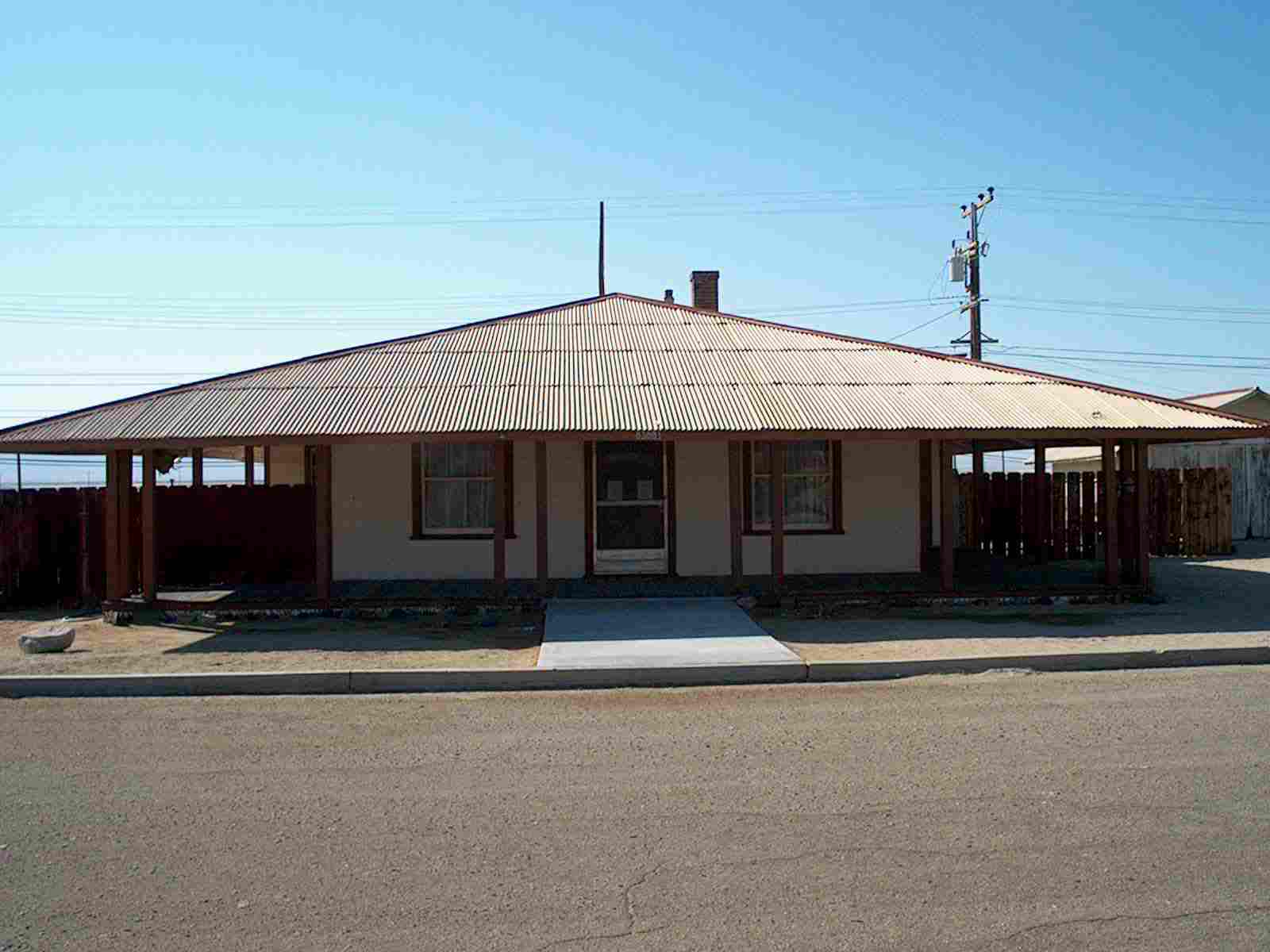
One of the oldest residential houses in Trona (built around 1920) located at 83001 Panamint Street. In 1986, Kerr McGee Chemical Corporation (at that time the resident chemical company) donated the house to the Historical Society. With the acquisition of this property, the Historical Society really began to flourish.
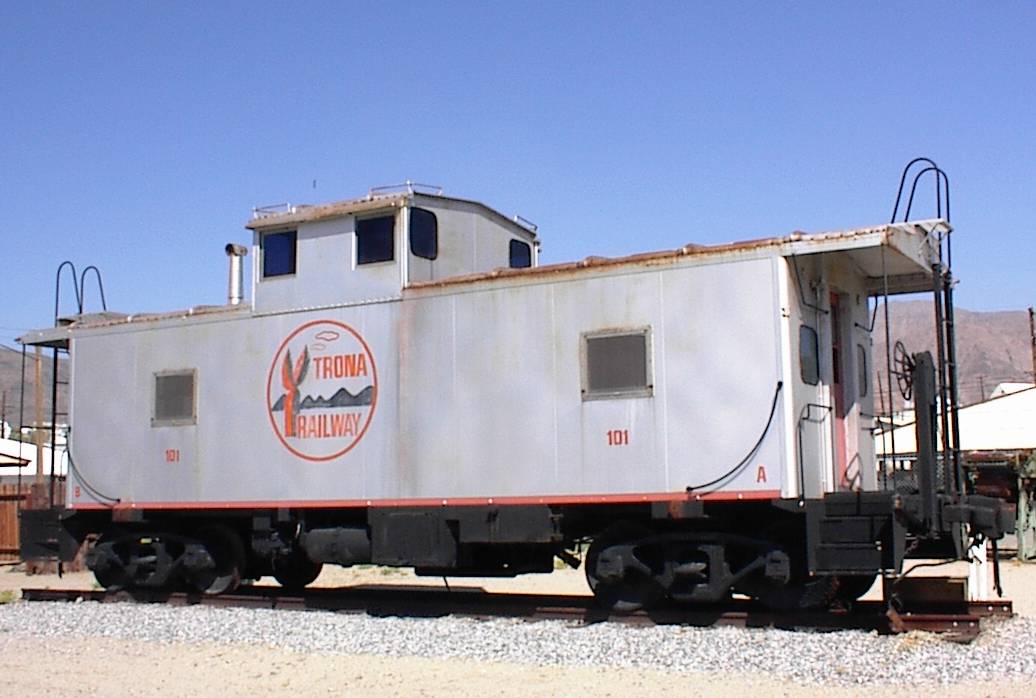
In 1997 the Searles Valley Historical Society extensively remodeled and opened a building for housing and displaying artifacts from the Trona Railway.
Among the items that are displayed; working equipment, such as actual railroad scales, office equipment including addressograph machines, timetables, stamps and various photographs.
The Trona Railway Caboose is housed in the lot adjacent to the History House. Built in 1958 it was acquired from the Trona Railway in 1992.
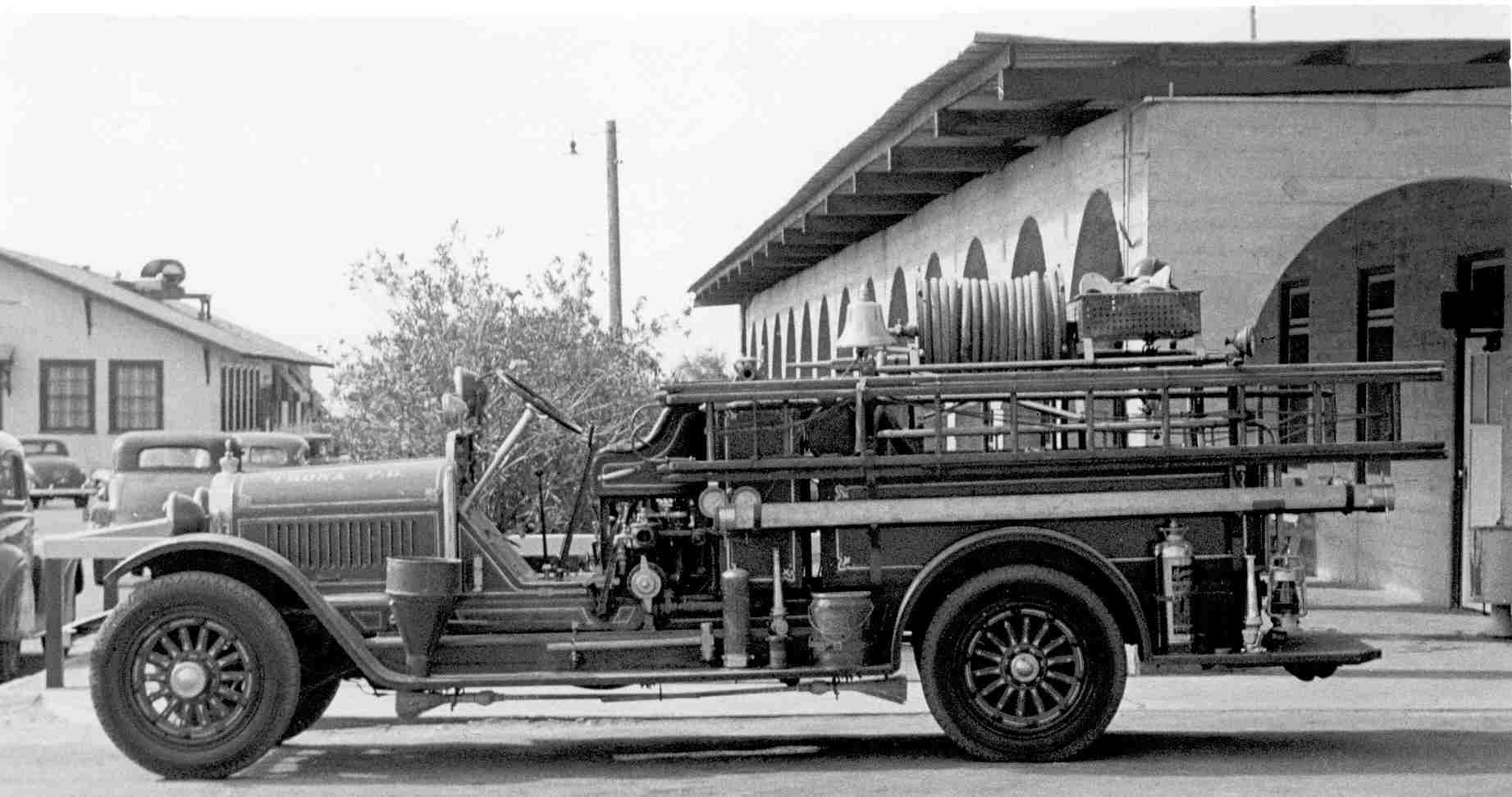
In the Argus Fire Station the 1924 Stutz and 1938 Ahrens-Fox are housed. The Stutz is being refurbished and the Ahrens-Fox is used in parades.
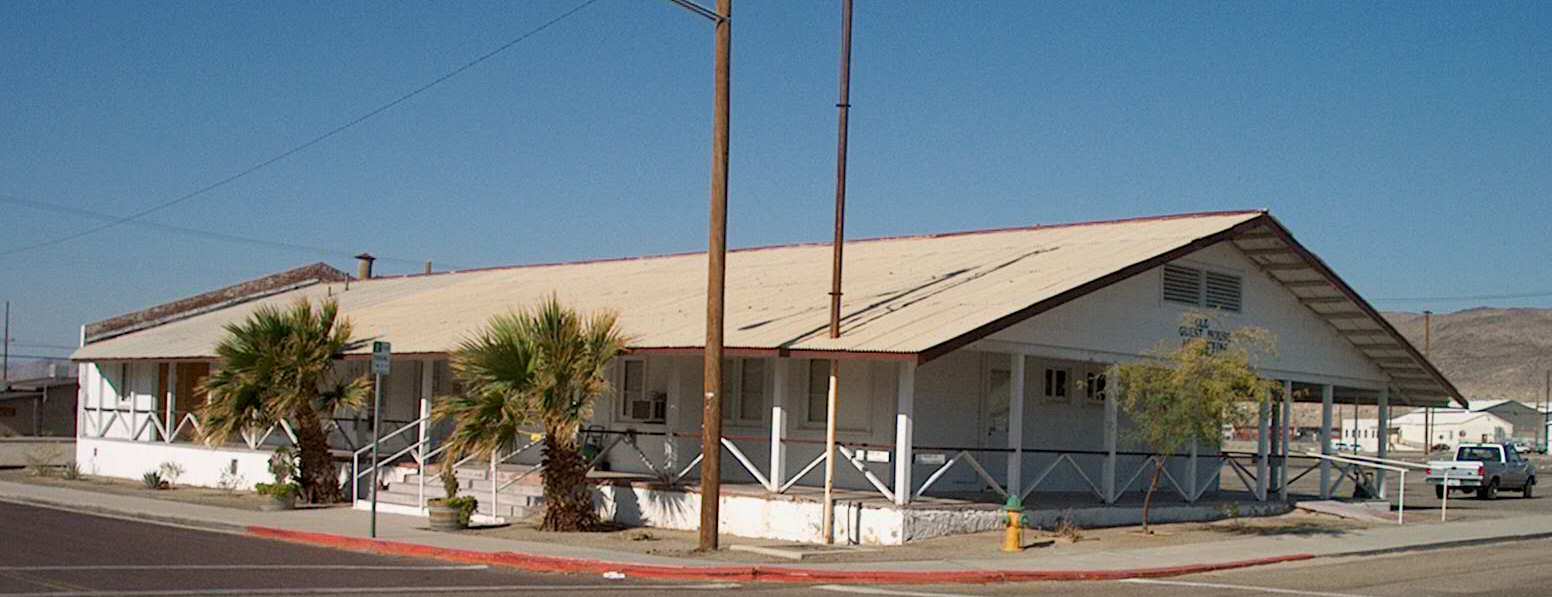
This building was built around 1917 and is one of the oldest buildings in Searles Valley. It was originally built as four apartments then remodeled into a guesthouse with 12 rooms for visitors to Trona since there was no available housing. The building has been remodeled several times since, including the addition of evaporative coolers and gas heaters. Originally it was heated with steam from the chemical plant.
In 1991, North American Chemical Company donated the building to the Historical Society, which we named the ‘Old Guest House Museum.’ There are 12 rooms designated to show events in Searles Valley from early mining days to present plant ownership. The activities and organizations of the residents are also reflected here. File room and library offer an excellent source of information for research.
The chemical companies, Trona Railway, residents, and friends of the museum donated all display items.
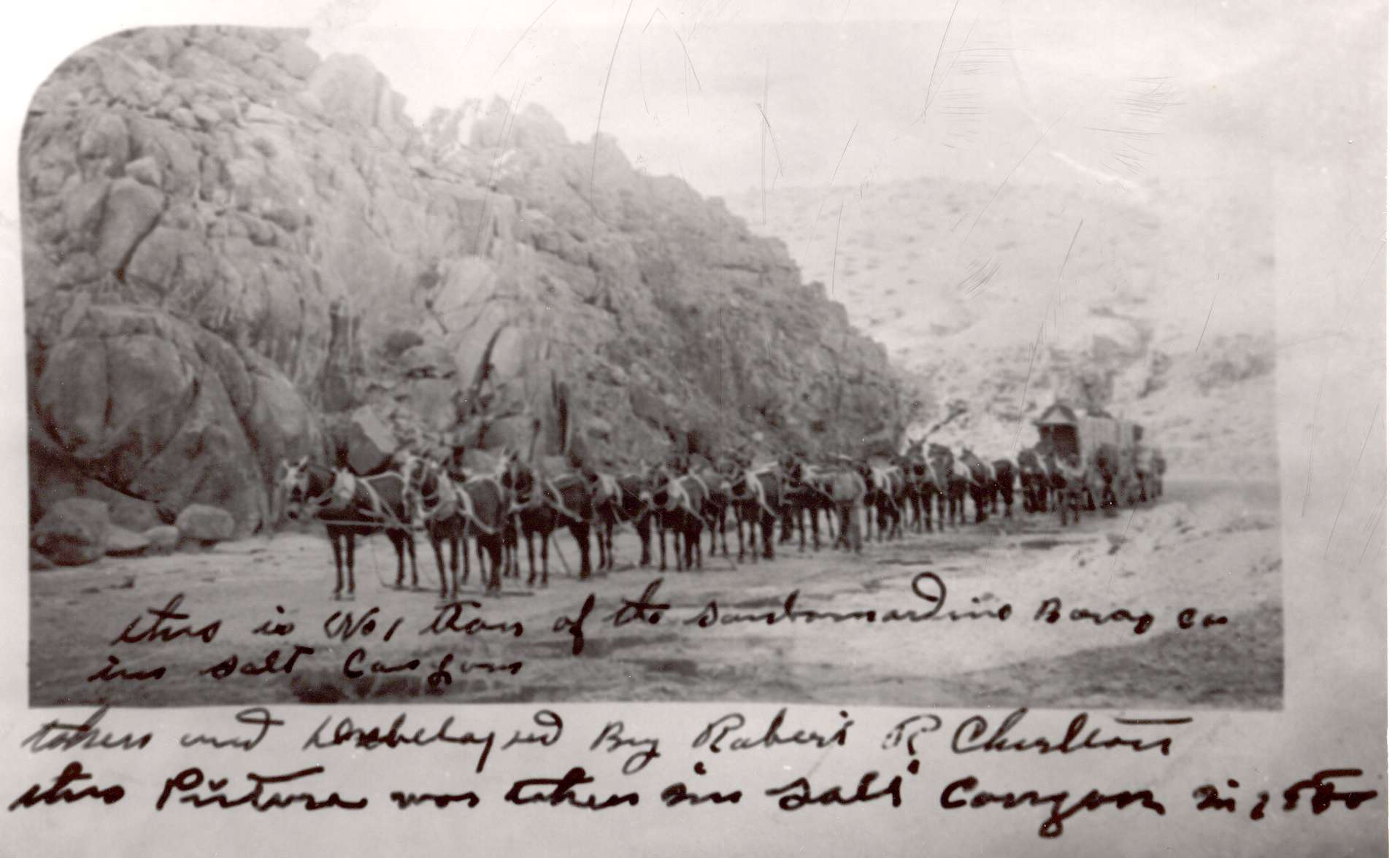
(POISON CANYON)
Salt Wells canyon is commonly called "Poison Canyon" because the small stream at its west end contains naturally occurring arsenic, selenium and other minerals at toxic levels.
This rock-walled canyon is the lowest point in the Indian Wells Valley basin. Therefore, it was the channel for the ancient Owens River as it flowed east during the melting of Sierra Nevada glaciers.
When Searles Valley was filled with water, deep mud deposits filled this canyon. When the lake evaporated, much of the mud was washed out of the canyon by flash floods. Residual mud deposits can still be seen along the sides of the canyon and at the canyon's eastern end.
On the North side of the canyon near its east end is "Fish Head Rocks." Best-viewed looking east, they were originally called the "Whale Heads."
The canyon was the route of the original 20-mule teams that hauled borax from Searles Lake to San Pedro.
This striking group of over 500 calcareous tufa towers is located about 12 miles south of Trona. This National Natural Landmark is accessible by a 5-mile dirt and mud (that is hazardously soft in wet weather) road from the end of State Highway 178.
These tufa towers were formed by calcium-bearing ground water from springs beneath ancient Searles Lake flowing up through the alkaline lake waters.
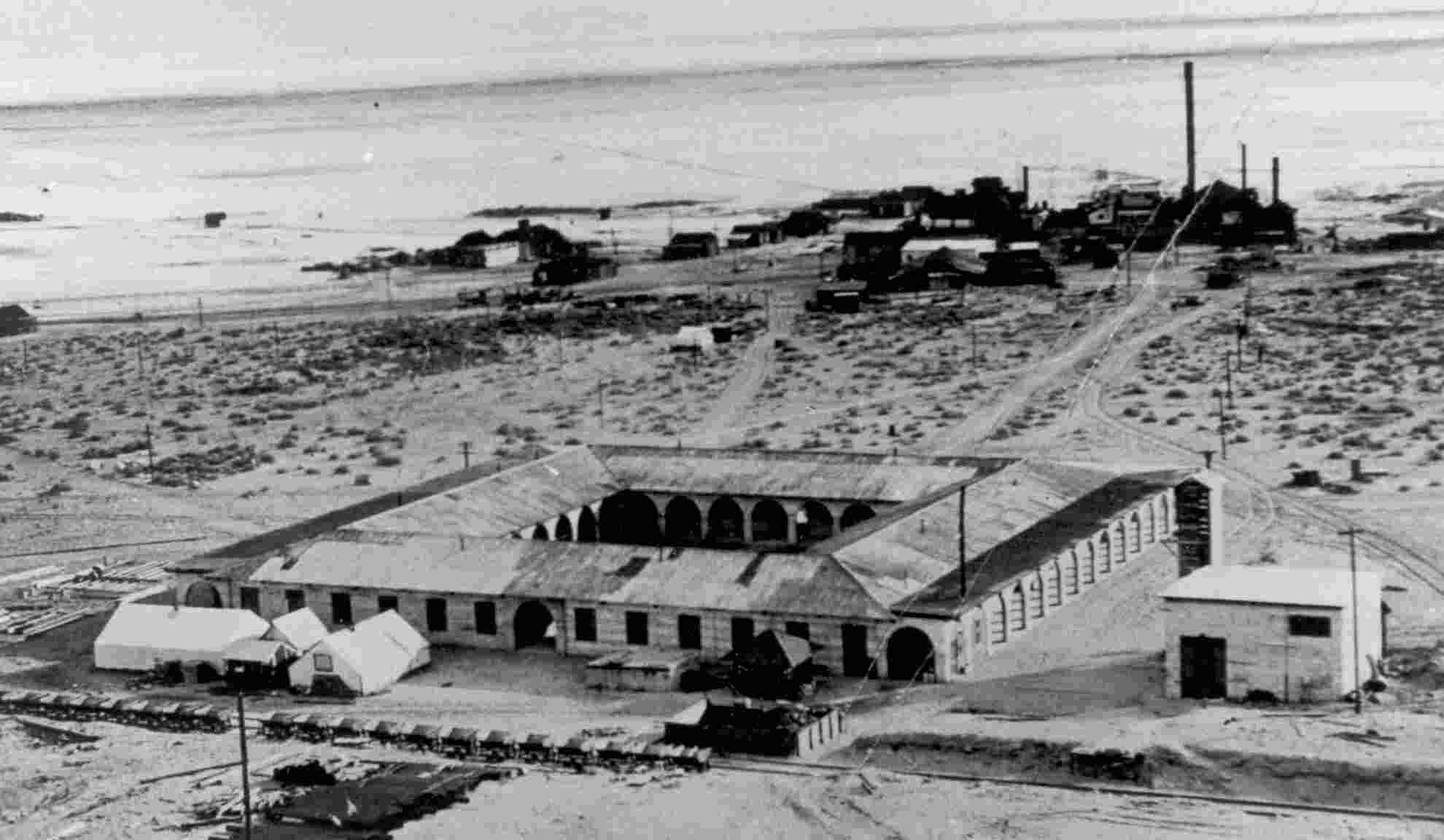
The Austin Hall plaque is across the street north of museum. It reads as follows:
Austin Hall, the much loved focal point of the Trona community, once stood on this site. Built in 1912 the unique structure, with its one-foot thick concrete walls, boasted 45 arches on three sides, the building provided a cooling shelter from the blazing heat with its patio center and oleander trees. Early employees were housed and fed in its spacious rooms and eventually all the town’s businesses were housed here. The patio became an open-air theatre with adjoining pool hall, a barber shop, post office, library, grocery and department store and a telegraph office with a switchboard for the single phone line into Trona.
The building was named for Stafford W. Austin, the court appointed receiver for the troubled California Trona Company. Austin guided the company through its evolution from the John Searles owned San Bernardino Borax Mining Company to the eventually successful American Potash and Chemical Corporation. The building was removed in 1965.
Plaque placed by the Searles Valley Historical Society, Trona, CA, on October 23, 2002.
Trona, California is in the Greater Mojave Desert at
San Bernardino County's northwest corner where it borders
Inyo County to the north and Kern County to the west.
The town was named after the abundant sodium
carbonate mineral found in the lake. Trona was a
company-owned town until the 1950’s, and even had their
own money, Trona Script.
California registered Historical Landmark No. 774. The landmark reads as follows:
Borax was discovered on the nearby surface of Searles Lake by John Searles in 1862. With his brother, Dennis, he formed the San Bernardino Borax Mining Company in 1873 and operated it until 1897.
These chemicals in Searles Lake, which include borax, potash, soda ash, salt cake, and lithium, were deposited here by the runoff waters from melting ice age glaciers.
John Searles’ discovery has proved to be the world’s richest chemical storehouse, containing half the natural elements known to man.
The plaque was placed by the Death Valley '49ers, Inc., the American Potash & Chemical Corp., and the West End Chemical Division of Stauffer Chemical Corp., on November 8, 1962.
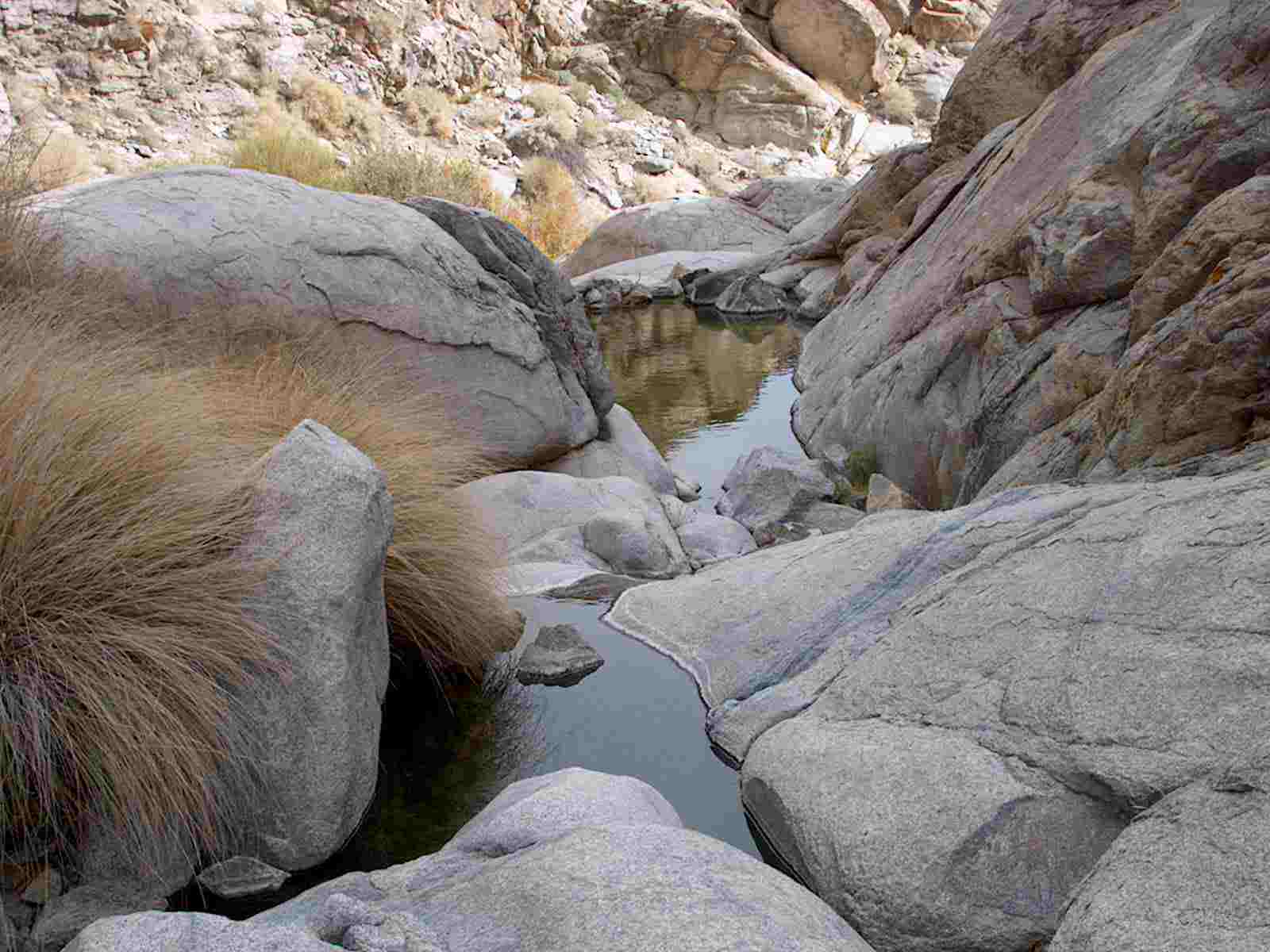
Since Indian Joe Spring in the Argus Range has year-round water, John W. Searles planted a garden and fruit trees there to help feed workers at his borax mine. Fig and nut trees, grape vines, and celery still grow there.
The spring, which was named by Searles, requires a 1.5-mile moderate hike. The trailhead is 2.2 miles north of the Inyo County line and then west 2.5 miles on graded dirt road.
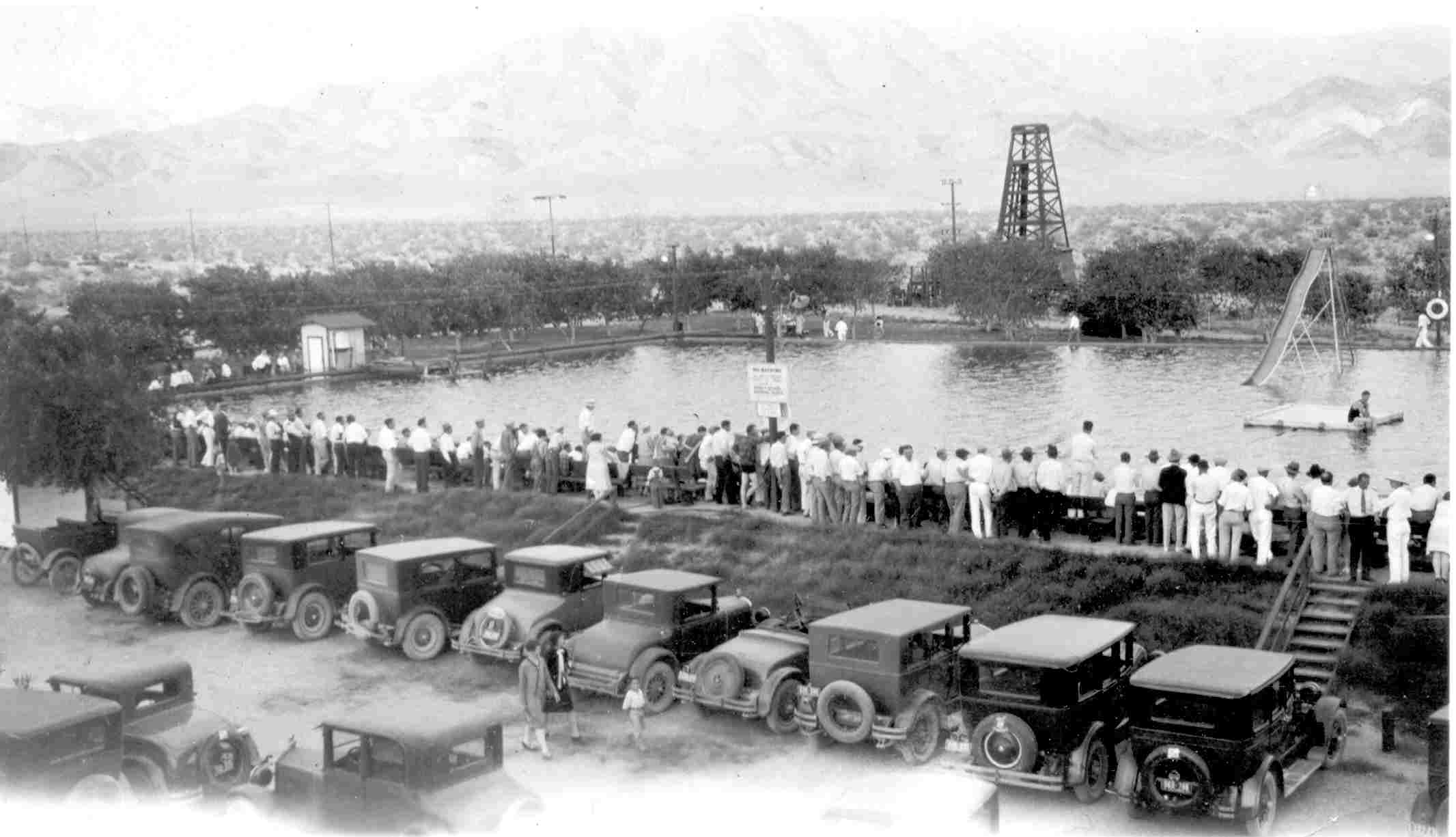
California registered Historical Landmark No. 443
The landmark reads as follows:
In this area, several groups of mid western emigrants who had escaped from the hazards and privations in Death Valley in 1849 sought to secure water from Searles Lake. When they discovered its salt nature they turned north and westward in despair and with travail crossed the Argus and other mountains to reach settlements of central and southern California.
This Historical Monument was placed and dedicated by the Trona Lions Club, in June 1982.
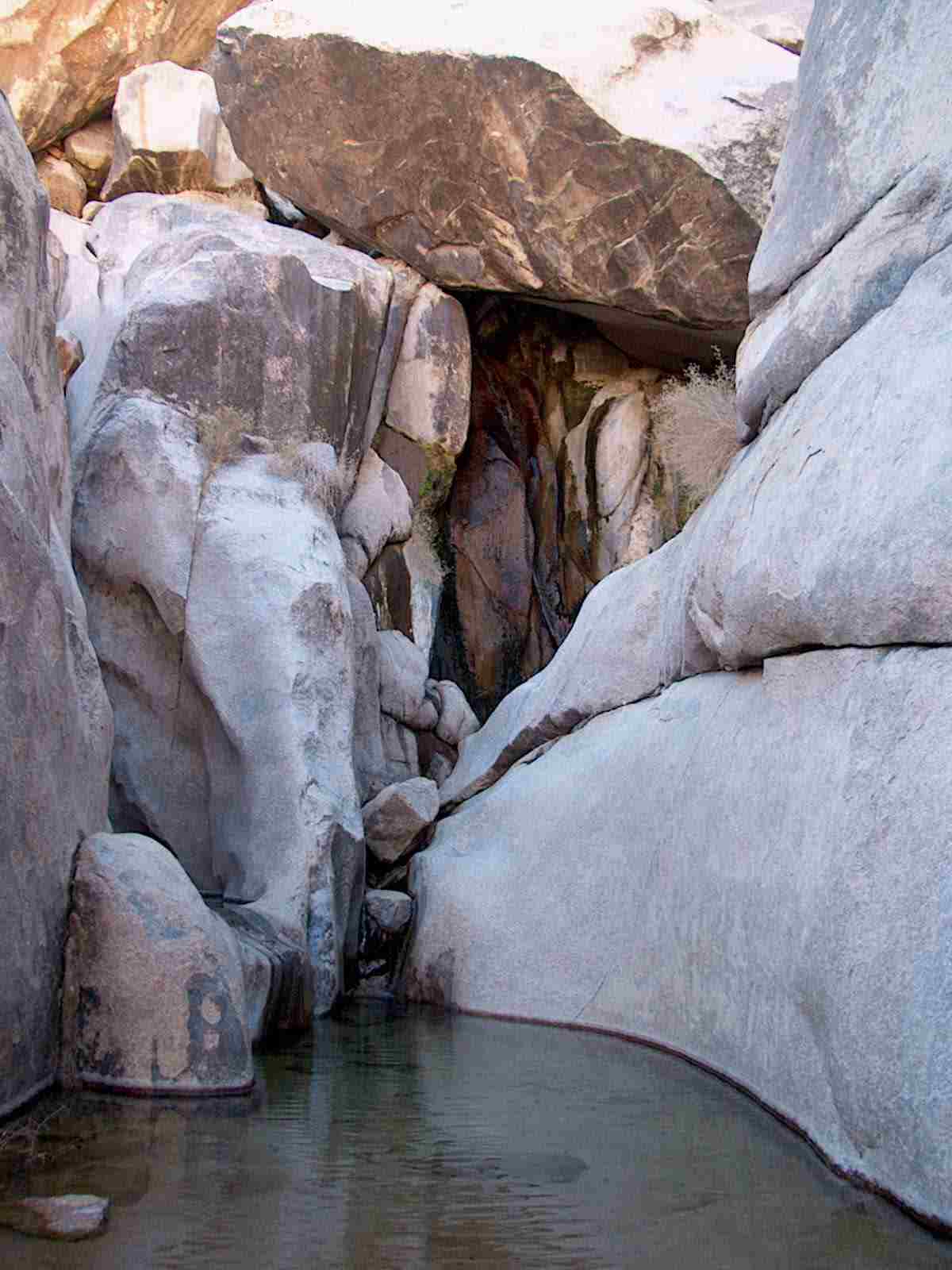
In springtime a stream from springs on the east side of Argus Peak flows through a high-walled canyon, tumbling over four falls up to 25 feet high, before sinking into the sand as it exits the canyon.
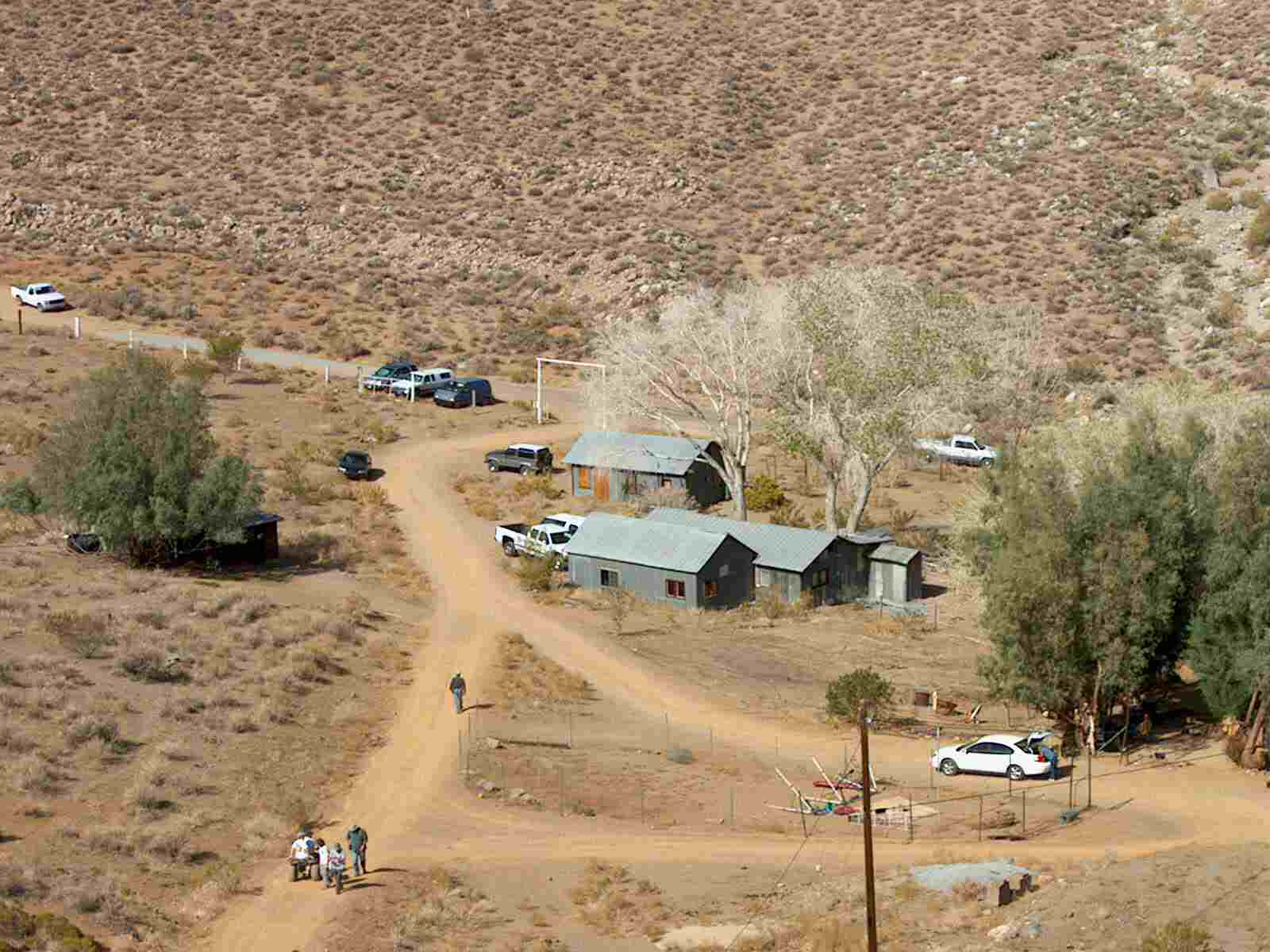
This desert mountain residential community is about 10 miles north of Trona in the Argus Mountains. Yards and gardens flourish on local spring and well water.
The historic Ruth Mine, at the end of the paved road, is an inactive gold mine closed at the start of World War II.
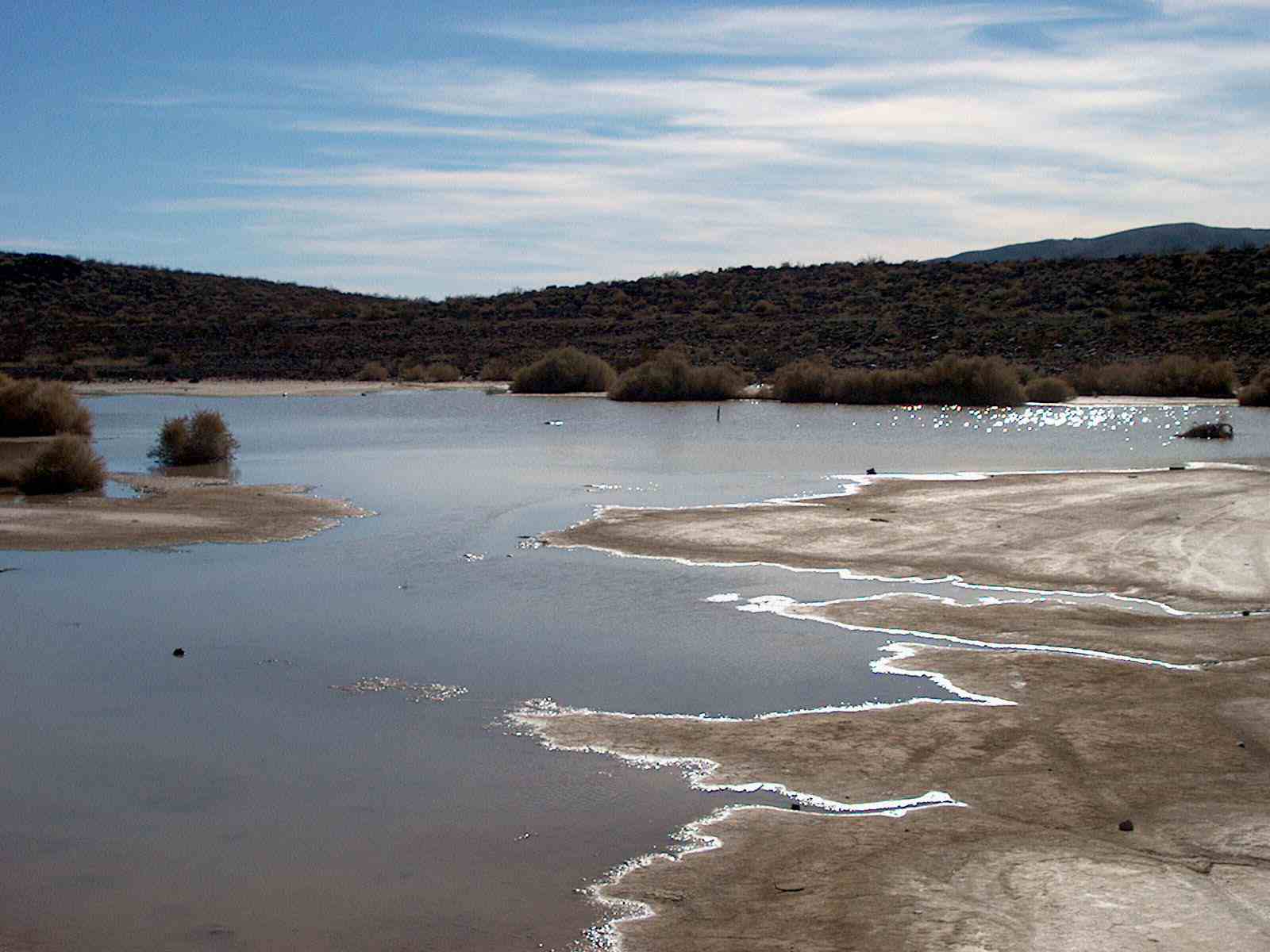
Where the Trona-Wildrose Road crosses over Slate Range Crossing, there are magnificent views of Panamint Valley and the Panamint Mountains topped by Telescope Peak at 11,049 ft. High areas of the mountains are usually covered with snow in winter and spring.
The Jayhawker party of ‘49ers crossed into Searles Valley 1.25 miles northwest of Slate Range Crossing on January 10, 1850 during their escape from Death Valley. The small playa just on the south side of Slate Range Crossing provided rainwater that was vital to their surviving the ordeal.
In the late 19th century Remi Nadeau, the top freight-hauler in the area, built a road across Slate Range Crossing. Traces of his road can still be seen east of the summit and on the floor of Panamint Valley.